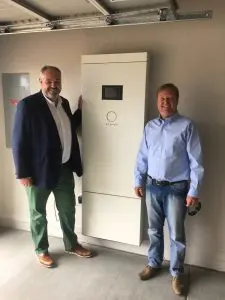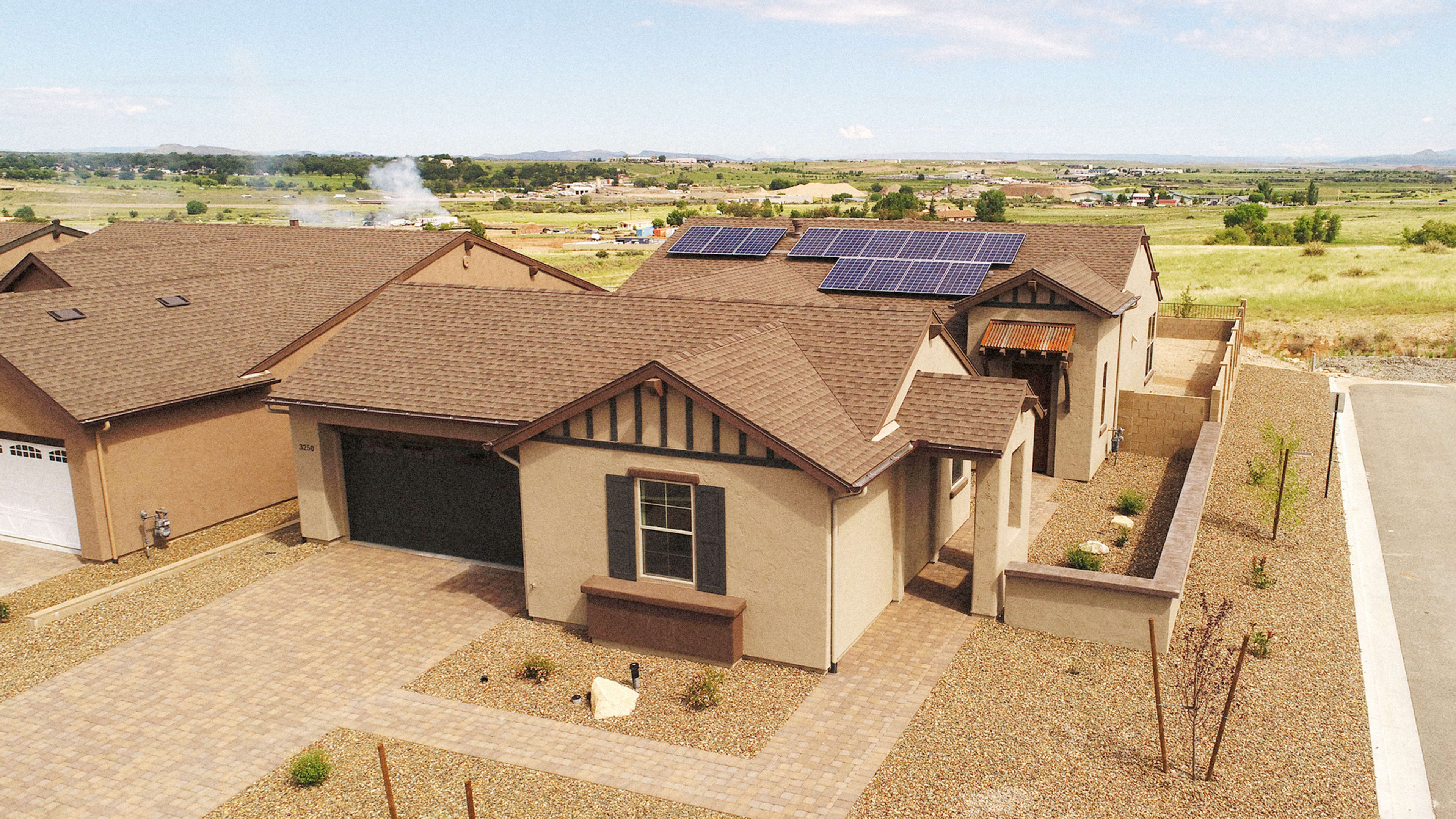If you live in Frankfurt, Germany and have solar panels on your roof, you might be able to generate enough energy to power your whole home throughout the day. But if you pull in too much energy for your needs, or not enough, you can trade power with another solar-powered home in Hamburg, or Berlin, or anywhere in the country. That’s the principle behind sonnenCommunity, a nationwide, cloud-based virtual power plant launched around three years ago and made up of around 8,000 homes equipped with solar panels and an interconnected SonnenBatterie—an energy storage unit developed in 2010 by the German company Sonnen. “What’s happening in Germany with peer-to-peer power-sharing is something that’s talked about in the U.S. as a great idea for future energy-storage solutions,” says Blake Richetta, VP of sales for Sonnen U.S.

That’s all well and good for Germany (and Italy, where there’s a smaller sonnenCommunitie), but establishing a sonnenCommunitie in the U.S. would not be quite so easy. There’s just one grid infrastructure, built after World War II, for all of Germany. The U.S.’s grid system, on the other hand, is made up of a complicated network of independent system operators at the state level, nestled within larger regional transmission organizations. Because sending energy across state lines counts as interstate commerce, that has to be overseen by the federal government. And because most areas of the U.S. are regulated markets, meaning a single utility has a monopoly on the region, they can’t just be cut out of the equation, as they are in Germany. Almost needless to say, a U.S.-wide sonnenCommunitie would be a logistical nightmare.
While individual homeowners in the U.S. have installed Sonnen solar arrays, complete with batteries, they have not been able to be aggregated into a solar-sharing network. But this fall, Sonnen is launching the first sonnenCommunitiy in the country. It will, necessary, look very different from its German counterpart, but it’ll be no less innovative.
Mandalay Homes, an Arizona-based home builder, is in the process of building a 2,900-home community in Prescott, Arizona. In that development, which will be called Jasper, all of the homes will be outfitted with solar tiles and 8-kilowatt-hour SonnenBatteries. When it’s complete, the Jasper sonnenCommunity will create a virtual power plant that will be able to aggregate up to 16 megawatt-hours of solar energy and deploy 8 MWh at any given time–comparable to a small power plant.
“What we had to do was partner with a specific utility, plus, we had to partner with a specific homebuilder,” Richetta says. If Sonnen were to try to launch a peer-to-peer community in the U.S. in the same way it did in Germany, with individual homeowners installing solar panels and batteries, and opting into the sonnenCommunitie, it would be a mess, Richetta says. “We might get two units in one utility’s territory, three in a different utility’s territory, and five in another,” he adds. “It would be difficult to control the launch of the community.”
Instead, Sonnen consulted with Mandalay Homes to standardize the integration of the Sonnen solar array across the units in the development. “So then we’re able to go to the utility and say: ‘Look, we have 8 MWh of clean energy available—are you interested in using it?’ And if they say yes, we can start to make the case around this type of sonnenCommunity in the U.S.,” Richetta says.
While Mandalay Homes and Sonnen have yet to finalize a relationship with the Arizona Public Service, the local utility in Prescott–that will likely come after the development is more fully underway this fall–Mandalay, taking a rather “if you build it, they will come” approach, is going ahead with establishing the sonnenCommunity regardless. The home builder has a history of innovation in the sustainable building space; it’s been awarded a Department of Energy Housing Innovation Award for energy efficiency every year since 2012. Before partnering with Sonnen this year, Mandalay Homes was already piloting models for zero-carbon homes that were equipped for energy storage, says Dave Everson, CEO of Mandalay Homes.
But the American clean energy market, Richetta says, “is paralyzed by pilots.” Innovative solutions to integrate more clean energy options into the grid system are often limited by both time and scale. In bypassing the test-the-waters phase and going straight to a 4,000-home solar installation (not insignificant, given that total residential installations just topped 1 million in 2016), Mandalay Homes is launching this development at a scale that could prove valuable to the utility. “We could potentially help APS take a coal-burning plant offline,” Richetta says.
The Jasper development will be connected to the grid, Everson says, but the homes have been engineered in such a way, in conjunction with the Sonnen array, to generate just about exactly as much energy as is needed to operate through peak hours, without straining the grid. What often happens with solar installations is that, on especially sunny days, the excess power generated ends up being funneled into the grid, which overtaxes it. The SonnenBatteries prevent that from happening. But Jasper could also help stabilize the grid by sourcing power from the utility at 3 a.m., “when the grid has so much energy that it’s literally just pushed into the ground and clipped because no one needs it at that time,” Richetta says. That’s called a load shift, and linking the grid to the external storage capacity of the Jasper community could flatten the fluctuation in energy supply and demand that the grid is currently straining to accommodate.
Energy utilities in the U.S., Richetta says, are loathe to change, or to move quickly when innovation presents itself. “But when you are building 4,000 homes, you become the utility company’s biggest customer,” Richetta says. Ignoring the development in Jasper is impossible, and Sonnen and Mandalay are optimistic that APS will see the development as a boon. “Ultimately, we’re presenting them with a question: ‘Do you want this to be about grid defection, or about grid integration and even grid enhancement?'” Richetta says.
Recognize your brand’s excellence by applying to this year’s Brands That Matter Awards before the early-rate deadline, May 3.
